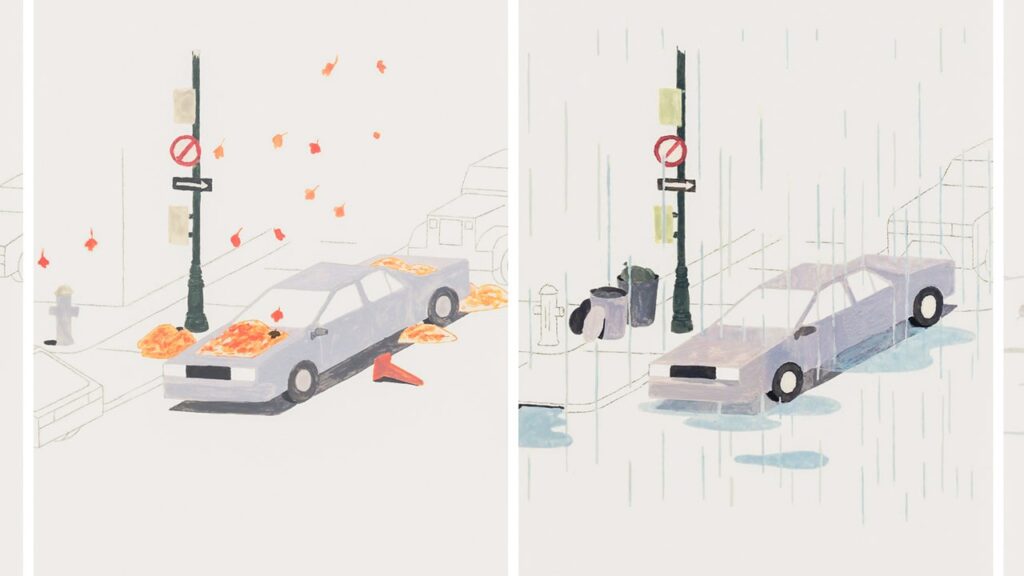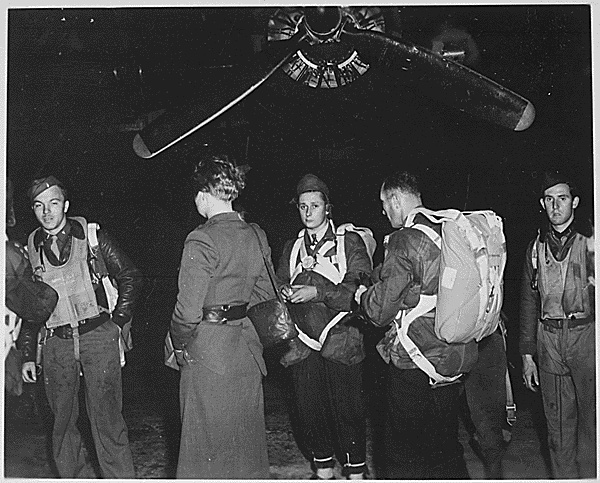Mostly, people sit in their cars and find ways to fill the time—the nappers, Bible studiers, book readers. Mary Norris, an author and a former copy editor at The New Yorker, wrote a blog called The Alternate Side Parking Reader. Jim Downey, a longtime head writer for “Saturday Night Live,” thought of bits. His car jokes include O. J. Simpson gags for Norm Macdonald’s “Weekend Update” and lines for Stefon, the Bill Hader character. In a parking space, the juices flow. “You’re in this little cocoon,” Downey told me. “People aren’t bugging you.” These days, people do therapy sessions, or take work calls or video meetings. Where else, in a city of eight million, do we get such solitude? Bianchi likes to make music. “The ukulele is easy because it fits behind the wheel,” he said.
Parking problems began, more or less, with the first vehicles. In 705 B.C., the Assyrian king Sennacherib prohibited chariot parking on royal roads. Violators could be beheaded. One of New York’s first parking panics came in the nineteen-twenties. Young couples, having discovered that cars were a nice, private place for making out, began parking wherever passion called. At night, fifty or sixty automobiles would clog Kings Highway, in Brooklyn. Another popular spot was Lookout Hill, in Prospect Park. The police staged periodic raids. After one, the Brooklyn Eagle wrote, “And so the petters, like the Gypsies, must move on again, a wandering tribe with every hand against them.” But to where? City designers at the time were lining streets with little parks. These became filled up with cars. We replaced parks with parking.
In the first decades of the automobile age, New York banned parking for longer than a few hours. The prohibition was irregularly followed. The N.Y.P.D. would just drive the illegally parked cars to the police station. (A later proposal suggested letting the air out of violators’ tires.)
The other day, I visited parking court. Manhattan’s Parking Violations Bureau is housed in an office building downtown. The vast majority of defendants argue their cases online. (Generally, the best defense is not to argue circumstances or evidence but to find an error on the ticket.) A handful show up in person. The bureau looks like a D.M.V., with a counter for checking in. The head judge, Marian Morris, talked affably with me. She asked what my neighborhood does when the sweeper comes. I told her that everyone double-parks. She winced.
There are parking defense attorneys, but not many; the penalty for ignoring alternate-side rules and blocking the sweeper is just sixty-five dollars, which is what a few hours in a midtown garage goes for. (The city tows, too, but usually only cars with unpaid fines.) Larry Berezin got into parking after he retired as a personal-injury lawyer. “People I beat parking tickets for were more grateful than people I beat criminal charges for,” he told me. In 2018, the city created a new position, the parking-summons advocate, whose office is in the Parking Violations Bureau. The current advocate is Anthony Tse, a friendly man who grew up in Bensonhurst, where his father scrapped for alternate-side parking. Now Tse lives in downtown Brooklyn and pays for a garage. His office instructs drivers on how to prepare evidence for their hearings (it helps if photos and videos are time-stamped and show a street sign), and, in obviously losing cases, educates people on the rules. He also assists a lot of people who were parked in a legal spot, only to be towed—by utility workers or film crews—to an illegal spot, where they were then ticketed.
As mayor, Fiorello LaGuardia once sat as a parking magistrate for a day. He stayed for five hours, heard a hundred and ninety-seven cases, and left in a police car that had been stationed next to a “No Parking” sign. Under Giuliani, the Parking Violations Bureau was transferred to the Department of Finance. Dennis Boshnack, a former parking judge who now contests parking tickets for clients, told me that this creates an unavoidable conflict of interest. “The Department of Finance, their mission is to collect money for the city,” he said. Judges can see a case every couple of minutes.
Parking court was empty when I arrived. A few defendants trickled in. A FedEx driver showed up with ten tickets. A security guard recognized him. “You’re a regular!” she said. He took off his hat when his hearing began. One woman came in with two tickets for using a fraudulent Department of Transportation parking permit. (The permit was legitimate, it turned out.)
Each hearing room is just a small office. A judge sits at a desk with a computer. The respondent sits in a chair. I watched one case involving a guy who lived on West Forty-eighth Street. He had six tickets on his Porsche. The first charge was a street-sweeping violation. The judge swore him in.
“How do you plead?” she asked.
“Not guilty.” He told the judge, “I was actually in the car fixing my daughter’s car seat.” Tse told me people often don’t realize that sitting in the car or double-parking for the sweeper isn’t a legal defense.
Over time, though, parking practices tend to solidify into law. New York ended its overnight-parking ban in 1954. The reason cited by the mayor was that no one was following the law, anyway. The reversal received modest press coverage. An argument could be made that it ranks among the most consequential decisions the city has ever made. It was also one of the most casual.
George Bichikashvili didn’t know it, but he was part of an entire industry of professional parkers. One consequence of New York legalizing free long-term parking is that much of the city’s critical infrastructure is now covered by parked cars. When Con Ed needs to access electric cables or steam lines, it sends someone like Bichikashvili, called a parking spotter, to reserve space around the manhole. Spotters work for cable companies, gas utilities, and movie shoots, but Con Ed’s are everywhere. Each year, the company spends millions of dollars on spotting. This is how New York has decided to keep the lights on. Owing to the unpredictability of the work, it’s not unusual for spotters to spend days, weeks, or more living in a parking space.
For Con Ed, spotters are an easy solution to a persistent problem. “We’re as frustrated as anyone is about the difficulty of parking in New York,” Jamie McShane, a Con Ed spokesperson, told me. The company farms out the jobs to a big contractor called CE Solutions. CE Solutions passes the work on to an array of subcontractors. The ideal subcontractor is just a guy who knows guys. One subcontractor was a reputed soldier for the Genovese crime family; another was a reggae musician in Harlem. Subcontractors typically get twenty-one to twenty-nine dollars per hour of spotting, and pay spotters as little as eight. On occasion, subcontractors get sued for failing to comply with New York’s overtime and minimum-wage laws. (Today, the minimum wage is sixteen dollars and fifty cents an hour.) Generally, courts have found that the layers of outsourcing insulate Con Ed and CE Solutions from liability. One subcontractor, CE 217, accused CE Solutions, in a lawsuit, of using subcontractors in “an elaborate shell game” to skirt labor laws. (A lawyer representing CE Solutions said, “The allegation is completely false.”)
Bichikashvili found the spotting job through a Georgian friend he called Sam. He was renting a room from Sam in Gravesend, Brooklyn. Later, Bichikashvili worked for another subcontractor, called A&M Transport. One former A&M employee has sued the company, alleging that his supervisor, Madina Shukurova, withheld his pay when his car broke down and he had to leave his spot, telling him that she would “make sure he can never get work.” In another lawsuit, workers alleged that supervisors controlled their bathroom breaks. When their break requests weren’t granted, they sometimes had to use a bucket. (Shukurova said in legal filings that she doesn’t have enough information to confirm or deny this.) The year that Bichikashvili was parked on St. Theresa Avenue, A&M made eight and a half million dollars.
New York drivers waste two hundred million hours each year circling for parking. This is enough man-hours to build four Nimitz-class U.S. Navy aircraft carriers. Twenty minutes to find a spot is routine. An hour isn’t crazy. Drivers have always complained that parking has never been worse. (In the nineteen-twenties, the city considered building a thirty-thousand-space lot beneath Central Park.) Car ownership keeps going up. Risks have gone down. In 1990, one car was stolen off the street for every fifty residents. Last year, it was one in six hundred.
Parking is the city’s most visible form of corruption. Roy Cohn got his start fixing his teachers’ parking tickets. A kickback scandal at the Parking Violations Bureau almost took down the Koch administration. Eric Adams has used parking as a political favor. As the Brooklyn borough president, he rewarded staffers with spots in the middle of the pedestrian plaza outside Borough Hall. (Adams compared one anonymous critic of his parking regime to a Klansman.) Back when diplomats at the U.N. were immune from paying parking tickets, they often just parked in front of a driveway. The more corrupt a diplomat’s home nation, the more brazen the parker. Kuwaitis were the worst offenders. The Canadian delegation went without a violation for eight years. In the eighties, the city began towing diplomats’ cars, and Sam Schwartz, who was then the traffic commissioner, was hauled before the U.N. “I addressed what I heard was the best-attended session of the General Assembly ever,” he told me. He recalled that the issue united the Arabs and the Israelis.
Every year, the city issues around a hundred thousand parking permits, called placards, to groups like the police and fire departments, and to people with disabilities. In 2017, Bill de Blasio gave placards to fifty thousand teachers and school employees during his reëlection campaign. Legally, placards confer limited privileges (you can park in some restricted zones; meters are free), but in practice they can function as blanket immunity. On the black market, placards go for as much as twenty-six hundred dollars. People also counterfeit their own. On cars parked in bus lanes or beside fire hydrants, you can find placards purporting to be from FEMA or the Red Cross, or just pieces of paper listing professions: “WORKING PRESS,” “doctor of podiatric medicine,” “NEW YORK STATE FUNERAL DIRECTORS OFFICIAL BUSINESS.” These work surprisingly well. For years, Jann Wenner, the editor and publisher of Rolling Stone, wangled special press plates for his car which allowed him to park where most others couldn’t.
The worst placard abusers are the police, who park on sidewalks, in front of hydrants, and in traffic lanes, bus lanes, and bike lanes. In the past, ticketing agents have been arrested for writing tickets to police officers. In 2011, eleven N.Y.P.D. officers were charged with fixing more than a million dollars’ worth of parking tickets. Patrick Lynch, the head of the police union at the time, said that the practice had been “accepted at all ranks for decades.” On the Upper West Side, officers of the Twentieth Precinct double-park their personal cars in the middle of Columbus Avenue. Cops get free subway and bus rides, but the precinct’s traffic sergeant argued that the parkers had no choice. “I can’t tell all the officers they need to take mass transit,” he said.
I recently met up with Gersh Kuntzman, the editor of the transportation website Streetsblog. Kuntzman hunts for traffic cheats—placard scofflaws, license-plate defacers. (People alter their plates to escape detection on tow cameras.) We wandered Brooklyn Heights to check out some parked cars. Kuntzman rode a bike that had a big parking placard on it. “I’m a chaplain!” he said. As part of an investigation, he had paid seven hundred and fifty dollars to something called the New York State Chaplain Group, which gave him a scam placard and a badge.
The first block we looked at was anarchy—placard cheats, meter skippers. On the dashboard of one car was a neon M.T.A. work vest. “He’s an M.T.A. employee?” Kuntzman said. “Why’s he driving to work? Because he’s an asshole.” He noticed that it had out-of-state plates. “Oh, he’s a Jersey asshole.”
We talked about parking over eggs at a nearby diner. “The question is not ‘Why is it too hard to park?’ ” he said. “It’s ‘Why is it so easy to own a car in the city with the most congestion in the world?’ ”
Kuntzman thinks that street parking should be mostly banned, and, when available, very expensive. Charging for parking was essentially the life’s work of Donald Shoup, a professor at U.C.L.A. and the country’s foremost parking scholar. Shoup died in February. His obituary in the Wall Street Journal said, “The magnitude of his influence has been likened to that of Robert Moses and Jane Jacobs.” (Moses happened to oppose street parking on national-security grounds: if the Soviets bombed, the congestion would be deadly.) The Journal continued, “He’s also been compared—in seriousness, by serious people—to Pythagoras, Cezzane and Einstein.” Shoup calculated that the country dedicates more space to parking each car than to housing each human. His insight was that free parking is not actually free. We spend as much on off-street parking—via things like taxes, higher rents, and subsidies—as we spend on Medicare. Shoup’s proposed solution was to charge enough that there’s always an open space or two on every block. The payments could be made in a number of ways: dynamically priced meters, residential parking permits. In Europe, cars come equipped with sensors that detect when you’re in a parking space and allow you to pay automatically, sort of like a parking E-ZPass. In Manhattan, of course, the market price might be obscenely high—probably not much less than a monthly garage. “He sounds like an enlightened individual,” Mary Norris told me, of Shoup. “But he was my archenemy.” If priced right, on the other hand, Shoup’s proposal could eliminate the time wasted on spot hunting.
Premium IPTV Experience with line4k
Experience the ultimate entertainment with our premium IPTV service. Watch your favorite channels, movies, and sports events in stunning 4K quality. Enjoy seamless streaming with zero buffering and access to over 10,000+ channels worldwide.

















